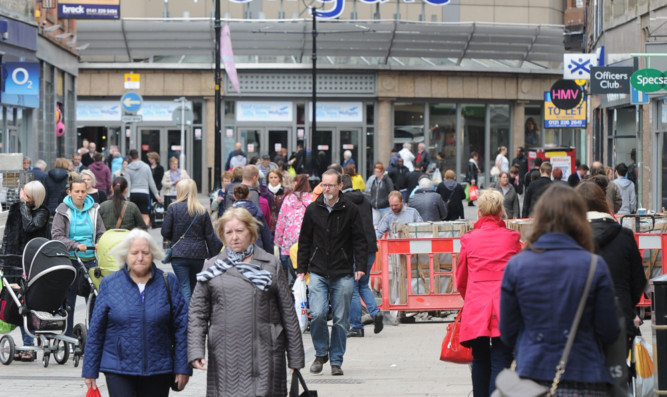Scottish shopper numbers tumbled for the second month running in June, prompting an industry leader to hope that the summer budget will trigger more consumer spending.
Scottish Retail Consortium director David Lonsdale was commenting on the 2.4% decline in footfall last month, greater than the 1.8% fall in May.
It was the worst performance since January and well below the three-month average fall of 1.1%.
The Scottish figures were worse than the UK’s where footfall for June was 1.5% lower than a year ago and down from the 1% fall in May.
Northern Ireland and Wales reported heaviest declines in UK nations’ footfall, down 3.5% and 3.0% respectively.
Mr Lonsdale continued: “Whilst these results are undoubtedly sluggish, it has to be borne in mind that this is only the third month in the past year where footfall growth wasn’t in positive territory.
“Until the June data for Scottish retail sales is published later this week we won’t know if this decrease in footfall has had any measurable impact on actual sales.”
Mr Lonsdale said retailers will be hoping that the Chancellor’s “twiddling of the fiscal dials” in the budget will help lift consumer spirits and spending going forward.
Analyst Diane Wehrle of Springboard, said: “The majority of this (footfall) acceleration was derived from a worsening of shopping centre performance, with greater drops in footfall in every month since January.
“This, together with the drop in footfall in Scotland’s high streets, is undoubtedly a function of the continuing dilution of shopper numbers through online trading.”
There was a 2.5% rise in footfall in Scotland’s retail parks in June for the 15th successive month.
She said this was “clear evidence that it is still possible to drive up the volume of customers to bricks and mortar stores,” although this was in part a function of owner-driven improvements in their quality and offer.
“Due to the multiplicity of ownerships and interests, it is not possible for high streets to easily benefit from wholesale owner-driven change,” she continued.
“This is something that shopping centres should be more able to capitalise on. This type of change is a longer term goal.
“In the short term retailers need to compare and contrast locations in terms of footfall to understand which ones are withstanding the growing structural changes in the retail sector and represent the best opportunities for growth and expansion.”
